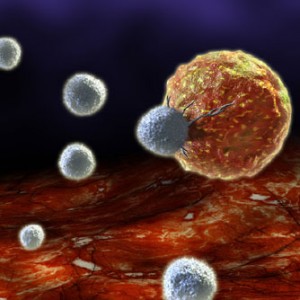A NEW METHOD TO STUDY NANOSCALE TO FIGHT CANCER
Life NK AHCC

Some researchers from UCLA's Jonsson Comprehensive Cancer Center have developed a new technique to fight cancer , in which the nanoparticles deliver customized chemotherapy drugs directly to the cancer cells and release their cargo , when signaled by a two-photon laser .
The results of the research by Jeffrey Zink , a professor of chemistry and biochemistry, and Fuyu Tamanoi , professor of microbiology , immunology and molecular genetics, and colleagues were published online in February in the journal Small and will appear in a future print edition .
Delivery of the product photoactivatable promising interesting results for the treatment of cancer because it allows doctors to control where and when the products are released in the body. Hitting only cancer cells and not the surrounding healthy tissues can greatly reduce the side effects of chemotherapy treatment and increase the anti cancer. But the development of a system of administration of drugs of this type has been and still is a challenge.
To solve this problem, teams Tamanoi and Zink, who collaborated with Jean -Olivier Durand French University of Montpellier to develop a new type of nanoparticles, with thousands of pores, or small tubes , which may contain chemotherapy drugs. The ends of the pores are coated with drugs that maintain nanovalves hermetically closed as in a bottle . The nanovalves contain special molecules that respond to photon energies that push the valves to open and release the drug .
The operation of the nanoparticles has been shown to now in the laboratory , using human breast carcinoma cells .
Since the effective range of the two-photon laser of the wavelength of the infrared is 4 cm from the skin surface , this delivery system would work best for tumors within that range , such as breast, stomach , and colon tumors ovarian .
In addition to sensitivity to light, the new nanoparticles are fluorescent and can be monitored in the body using molecular imaging techniques . This allows researchers to monitor the progress of the nanoparticle in the tumor cell target before activating the light.
Source: Worldhealth
Life NK AHCC
